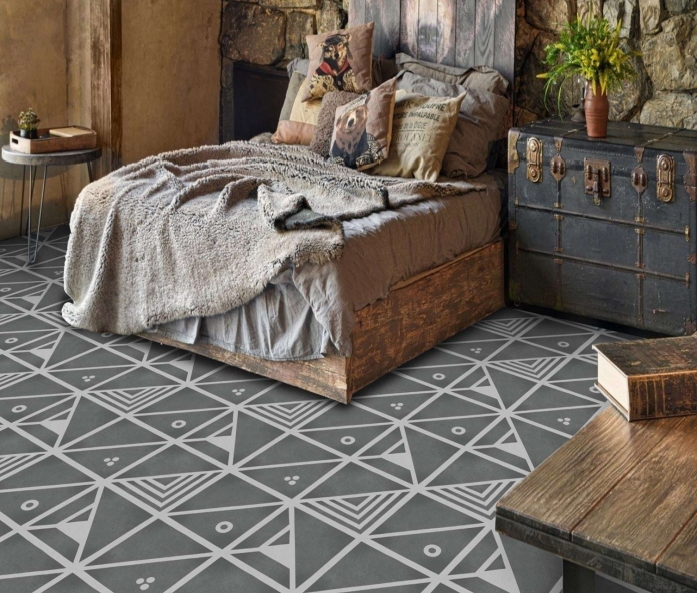Tiles are a popular choice for flooring and backsplashes due to their durability, ease of maintenance, and wide variety of styles and colors. With so many options to choose from, it’s easy to find a tile finish that fits your style and budget.
By considering circulation patterns and accessories, you can create a truly unique and functional space that reflects your personality and taste. But they can sometimes look a little plain or unfinished.
Here are 10 tile accessories that can help you elevate your space and give it a more polished look:
- Grout Sealer: A grout sealer will help protect your grout from stains and mildew, making it easier to clean and maintain. It can also give your grout a more finished look.
- Tile Trim: Tile trim, also known as Schluter strips, can be used to create a finished edge around your tiles. It comes in a variety of materials, including metal, plastic, and stone, and can be used to add a touch of detail and elegance to your space.
- Chair Railing: Chair railing is a type of molding that is typically installed about a third of the way up the wall. It can be used to protect your walls from damage, and it can also add a touch of sophistication to your space.
- Tile Spacers: These small, plastic accessories ensure consistent spacing between tiles during installation, resulting in a professional-looking finish. They come in various sizes to accommodate different tile spacing requirements.
- Tile Cutter or Wet Saw: A tile cutter or wet saw is essential for cutting tiles to fit around obstacles, corners, or edges. Choose a tool that can accurately cut your tile material and thickness without causing chipping or breakage.
- Tile Nippers: Tile nippers are handy tools for making small, irregular cuts or shaping tiles to fit around pipes, curves, or other obstacles. They allow for precise adjustments and finishing touches during installation.
- Tile Leveling System: For large-format tiles or installations where precise leveling is crucial, consider using a tile leveling system. These systems help ensure a flat, even surface by reducing lippage and achieving consistent tile heights.
- Tile Adhesive: Use a reliable tile adhesive or mortar to secure your tiles to the substrate. Choose a product that is suitable for your tile type, substrate, and installation conditions.
- Tile Edge Protectors: To prevent damage to tile edges during handling, transportation, or installation, use tile edge protectors or corner guards. These accessories help maintain the integrity of the tiles and ensure a flawless finish.
- Grout floater: A grout floater consists of a sturdy yet flexible rubber pad connected to a C-shape handle. You can opt for different levels of hardness and thickness, so make sure to choose the one that will deliver the best finish
FAQs
Q. Where can I find and purchase these tile accessories?
You can find tile accessories such as tile cleaning solutions, sealants, and polishing compounds at various places:
- Hardware Stores: Most hardware stores carry a range of tile cleaning and maintenance products. You can find cleaning solutions, sealants, polishers, and other accessories in the cleaning or home improvement sections.
- Home Improvement Centers: Large home improvement centers like Home Depot, Lowe’s, or B&Q typically have a wide selection of tile maintenance products. They often have dedicated sections for cleaning supplies and home maintenance.
- Online Retailers: Websites like Amazon, eBay, or specialized retailers offer a vast array of tile cleaning and maintenance products. You can easily browse and purchase these items online and have them delivered to your doorstep.
- Tile Specialty Stores: Some stores specialize in tiles and related accessories. These stores often carry a comprehensive range of cleaning and maintenance products specifically designed for various types of tiles.
Q. What is the best thing for polishing tiles?
When it comes to polishing tiles, the best product to use depends on the type of tiles you have:
- Ceramic and Porcelain Tiles: For ceramic and porcelain tiles, you can use a commercial tile polish or a specialized tile sealer that provides a glossy finish. These products are typically applied after cleaning the tiles thoroughly and following the manufacturer’s instructions.
- Natural Stone Tiles: Natural stone tiles such as marble, granite, or travertine require specific care. It’s essential to use a polish or sealer designed specifically for natural stone to avoid damaging the surface. Always follow the manufacturer’s recommendations and test any product on a small, inconspicuous area first.
Q. How do I make my tiles smooth and shiny?
To make your tiles smooth and shiny, follow these steps:
- Clean the Tiles: Start by cleaning the tiles thoroughly to remove any dirt, grime, or residues. Use a suitable tile cleaner and scrub the tiles with a sponge or brush.
- Apply a Tile Polish or Sealer: Once the tiles are clean and dry, apply a tile polish or sealer according to the manufacturer’s instructions. Use a clean cloth or applicator to apply the product evenly across the tiles.
- Buff the Tiles: After applying the polish or sealer, buff the tiles gently with a clean, dry cloth to bring out the shine. This step helps to distribute the product evenly and remove any excess.
- Regular Maintenance: To maintain the smoothness and shine of your tiles, regularly clean them with a mild cleaning solution and wipe them dry after cleaning. Avoid using abrasive cleaners or scrubbing pads that could dull the surface of the tiles over time.










